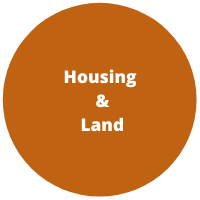1. Identification
Project proponent: Womens Collaborative for Environmental Protection (COFEPE).
2. History, Founding and Context
Social, political and institutional context in which the project is based: Densely populated, large-scale waste production, deterioration in quality of life and related harmful impacts. The collection, removal, and treatment of wastes leads to the creation of jobs and underlines the need for environmental protection.
Project proponents: two young urbanists/planners and Alphalog.
Project start date: July 1991.
Different project phases:
1. Creation;
2. Start-up;
3. Identify resources and articulate development policy;
4. Evolution/development;
5. Benefit from, and further develop, project experience.
Current situation: identify resources and adequate policy to guide the development of activities.
3. Objectives, Strategies, and Targeted Zones
Objectives:
Improve quality of life while creating jobs;
Motivate residents, partners and authorities to promote and efficiently use resources and means.
Site selection criteria: low-income areas without either the infrastructure or the means to collect and treat wastes.
Extent of beneficiary participation: participate in operating costs but not in investment or start-up costs.
Targeted Zones:
Regional level;
Urban or peri-urban level (operating in the neighbourhoods of the District of Bamako);
Community level (actions conducted in other regions of Mali);
Isolated or dispersed settlements.
Innovative aspects:
Socio-organizational: put into place coordination among partners in sanitation in the Municipality IV (CPAC); the first of its kind to collaborate with the elders committee of the neighbourhood;
Technology: (1) metal tipping carts have replaced wooden carts, (2) pipes connecting the toilets to the sumps are covered with screens to filter out debris;
Financial: contributions with the intent of establishing and making the associations work;
Methodology: at-source sorting of waste. Establishment of a contract between clients and the COFEPE that sets up instalment payments to facilitate client payment;
Management: use of tools facilitating accountability and the designation of who is responsible by activity.
4. Participants and their Roles
Beneficiary population:
– Sort and prepare wastes correctly in the waste baskets;
– Pay regularly taxes for waste removal and the costs of construction of sumps.
Social organizations:
– Submit new ideas to participants;
– Control activities and the funds invested in certain municipal activities;
– Defend the rights of the population;
– Act as mediator between participants/actors and clients;
– Support or reject the idea of a new project at the request of the lessor.
NGO:
– Research financing of installation of structures;
– Organize participants/actors in the targeted areas;
– Control financial management and monitor projects.
Government:
– Award public contracts in the field of urban development in the request for proposals, and control the works;
– Pull together participants/actors in meetings that concern them, and engage them in municipal actions if necessary.
Financier:
– Constituted by the State, the decentralized communities, private companies, households and NGOs (the interest rates are high but the payment is spread out over several months).
Universities:
– To be stimulated by our experiences within the framework of their research and to make recommendations.
Private companies:
– Rent materials related to our work implementation (example: truck buckets to clear gutters).
International cooperation:
– Finance projects that assist the population (Canadian International Development Agency (CIDA) provides for 50% of the construction costs of the sumps).
5. Programme Where to Intervene?
Habitat:
– Housing;
– Infrastructure and services: construction of sumps, improved toilets, removal of wastes, construction of the flagstones/paving;
– Equipment;
– Public places: clean public roads and gutters;
– Others: education related to hygiene and waste sorting, participation in municipal activities (example: health days).
Social and cultural aspects:
– Level of social participation: households participate in the costs of waste removal (up to 80%). Social associations exist in each neighbourhood but undertake few actions, although recently, they contributed to the paving of streets;
– Degree of autonomy: maximum;
– Womens roles: they represent a veritable force, they know how to mobilize and organize themselves but their financial situation does not permit them to undertake large-scale actions.
Impacts and ecological sustainability:
– Generation of revenues through the production of housing (jobs generated, production of construction materials, etc.);
– Creation of a micro-industry;
– Income-generating activities and savings linked to the sustainable management of resources.
Waste recycling:
– Composting: all the cooperative members have been trained in composting;
– Urban agriculture: a perspective;
– Forestry;
– Collection and reuse of water: future agreement with the Global Rain Water Harvesting Collective;
– Water and electricity saving techniques.
Contribution to urban development:
– Urban management and organization;
– Improvement of peri-urban areas;
– Environmental protection and heritage protection;
– Improvement of air quality;
– Process and integration of different elements.
6. Project Impacts
Socio-organizational: training of CPAC, COGIAM, and CAFO
– Organizational criteria: structures operate in the same areas;
– Training: in the area of sanitation, business creation and management, environmental protection techniques and recycling of wastes (i.e. compost), public awareness raising techniques (i.e. COFEPE formed the multi-purpose cooperative of the women of Toguel-Mopti);
– Participatory process: household involvement, neighbourhood head, influential people, elders committee;
– Information and communication: private radio, television, skits or plays, lecture-debates.
Financial:
– Savings;
– Community funds;
– Access to resources:
International cooperation: Embassy of the Netherlands, ALPHALOG, Canadian assistance, PNUD BIT (PAPF);
Public resources: the state in terms of their urban development policy (cleaning of gutters, street cleaning, street paving);
Private resources: households.
Legal:
– Legal framework;
– Agreements;
– Others.
7. Implementation and Key Lessons
Impacts on:
– Beneficiaries: clean homes, reduced risk of illness;
– Community: improvement in quality of life, competence in hygiene measures;
– Environment: abatement of ad-hoc dumping, sanitary environment;
– Public policy and norms: general sanitation policy;
– Democratic city management: involvement of all social strata.
Obstacles encountered:
– Material, financial resources, inadequate equipment.
Lessons learned:
– Lack of legal framework and institutional framework for social organization/action.
– Carts and animals are not well-suited to business tasks/undertakings; adequate transport means are required;
– Loads exceed the capacity of associations/groups.
8. Contact
Coopration Fminine pour la Protection de lEnvironnement (COFEPE), BP 6084, Tel: (223) 229 36 88.


